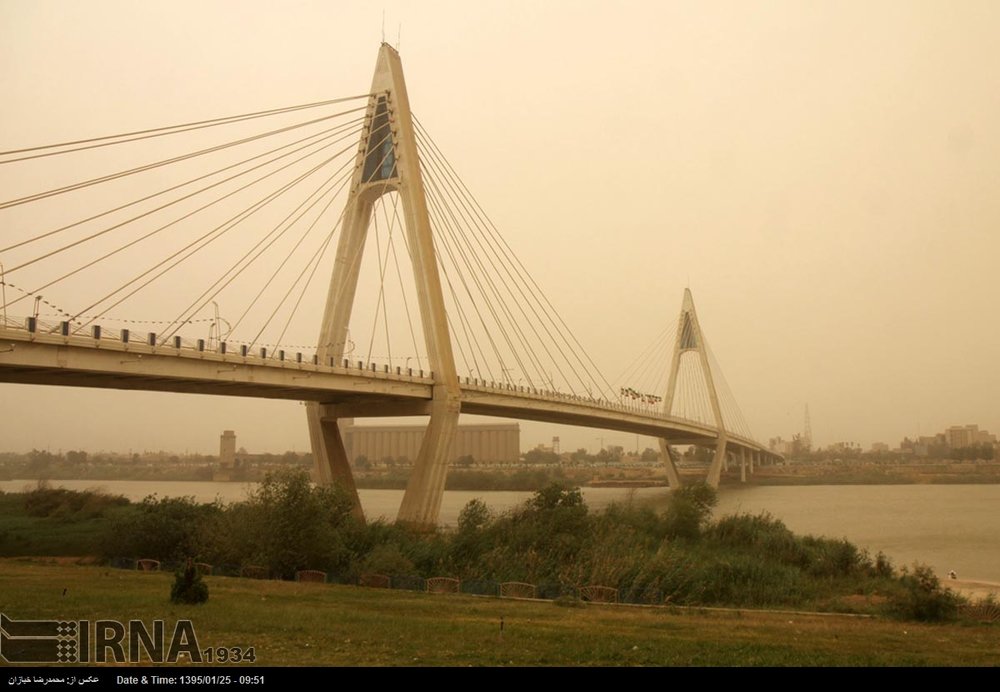Annual dusty days up day-and-a-half in Khuzestan over 3 decades

TEHRAN — The number of dusty days in southern province of Khuzestan have increased by day-and-a-half over a 30-year period per annum on average, the provincial meteorological organization director has said.
The number of dusty days is different in different seasons, but on average over a 30-year period sand and dust storms hit the area 63 days annually, IRNA news agency quoted Mohammad Sabzehzari as saying on Wednesday.
However, some years the number of dusty days surged to 115 days over a year, he regretted.
Between the years 1386 (March 2007-March 2008) and 1388 (March 2009-March 2010) were among the years with highest incidence of sand and dust storms, Sabzehzari added.
The main reason behind the sand and dust storms during the aforesaid years were dust hotspots in Iraq and low precipitations had given rise to crippling sand and dust in the region, he explained.
He went on to say that sand and dust storms have adverse effects on the people’s lives and health and the lower the precipitations are the more the sand and dust storms occur.
Nonetheless, this year with increased rainfalls in the province of Khuzestan sand and dust storms only stricken the areas one or twice during the first month of autumn.
A sandstorm or duststorm is a meteorological phenomenon usually caused by strong and turbulent winds blowing over loose soil or sand and sweeping up large quantities of sand or dust particles from the ground, clouding the air and reducing the visibility drastically.
But once rain falls on the soil it won’t let the wind to blow the loose soil or sand and hence decrease the chances of a sand and dust storm, he said.
According to data released on Saturday by the National Drought Warning and Monitoring Center the whole country received 80.6 millimeters of rain since the beginning of autumn which almost quadruples last year’s precipitation.
Over the same period the province of Khuzestan received 233.5 millimeters of rain while last year’s precipitations in the area amounted to 41.9 millimeters.
Sabzehzari also explained that if it doesn’t rain for a month, due to the special characteristics of the soil and high evaporation rate in the rea the chance of sand and dust storms increase once again.
Elsewhere in his remarks he highlighted that in fighting sand and dust storms forecasting them in advance is of great importance.
Last year a national center for fighting sand and dust storms was set up in Khuzestan province and is working in association with Barcelona Dust Forecast Center, he stated.
Now we can at most forecast sand and dust storms three days before the strike, he concluded.
Asian and Pacific Centre for the Development of Disaster Information Management (APDIM) was opened in Tehran on Wednesday.
According to the head of the international affairs at the Department of Environment Naser Moqaddasi, APDIM as a regional institution of the United Nations Economic and Social Commission for Asia and the Pacific (UNESCAP) can play a significant role in reducing the risks of natural disasters, including sand and dust storms.
MQ/MG
Leave a Comment